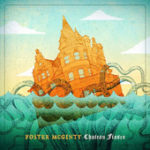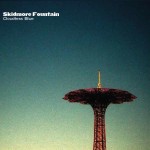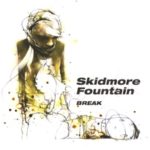Selected Recordings – Indie and Singer/Songwriter
Selected Videos – Indie and Singer/Songwriter
Selected Credits – Indie and Singer/Songwriter

Album: Delicious by Kirsten Thien
Label: Screen Door
Credit: Drums

Album: This Is Lost by Galia Arad
Label: Indie
Credit: Drums, Percussion

Album: Chateau Fiasco by Foster McGinty
Label: Indie
Credit: Drums, Percussion

Album: Wide Awake Dream by Cordelia Stephens
Label: Indie
Credit: Drums, Percussion

Album: Cloudless Blue by Skidmore Fountain
Label: Triple R
Credit: Drums, Percussion, Co-Writer, Band Member

Album: Break by Skidmore Fountain
Label: Triple R
Credit: Drums, Percussion, Co-Writer, Band Member

Album: Full Trucker Effect by Johnny Socko
Label: Asian Man
Credit: Drums, Percussion, Co-Writer, Band Member
FAQ
What makes indie and singer/songwriter drums different from other styles?
For singer/songwriter projects, my goal is to lay down a warm, supportive foundation that moves the track along, but never gets in the way of the melodies, harmonies, and most importantly the vocals. I generally use larger vintage drums, tuned low, often playing them with various brushes or rods. Shakers and tambourines work really well in these settings, and definitely dark, thin cymbals to stay below the frequency range of the voice.
For indie tracks, the approach can get much more experimental. I’ll pull from a whole bunch of different genres and instruments – anything from hand drums collected around the world to vintage 80s analog drum brains.
How do you record indie and singer/songwriter drums differently?
For singer/songwriter tracks, we really try to emphasize warm, lush tones from the drums. We use lots of ribbon mics and lower-voiced LDCs to round off any sharper high frequencies from the drums and cymbals – that space is reserved for the voice (and usually the acoustic guitar), so we don’t want to be fighting for the same frequency range.
Again, for the indie projects, we use some combination of all our other more genre-specific recording techniques. Maybe it’s heavy gobos around the kit for an extremely tight close-miced sound, combined with distant mics out in the hall to add depth and space. Maybe it’s three mics around the set in Glyn Johns configuration, combined with a vintage 70s telephone that’s been rewired as a microphone. Whatever works to get the sound!
Ready to go? Let’s record drums!
Have a question? Ask us!